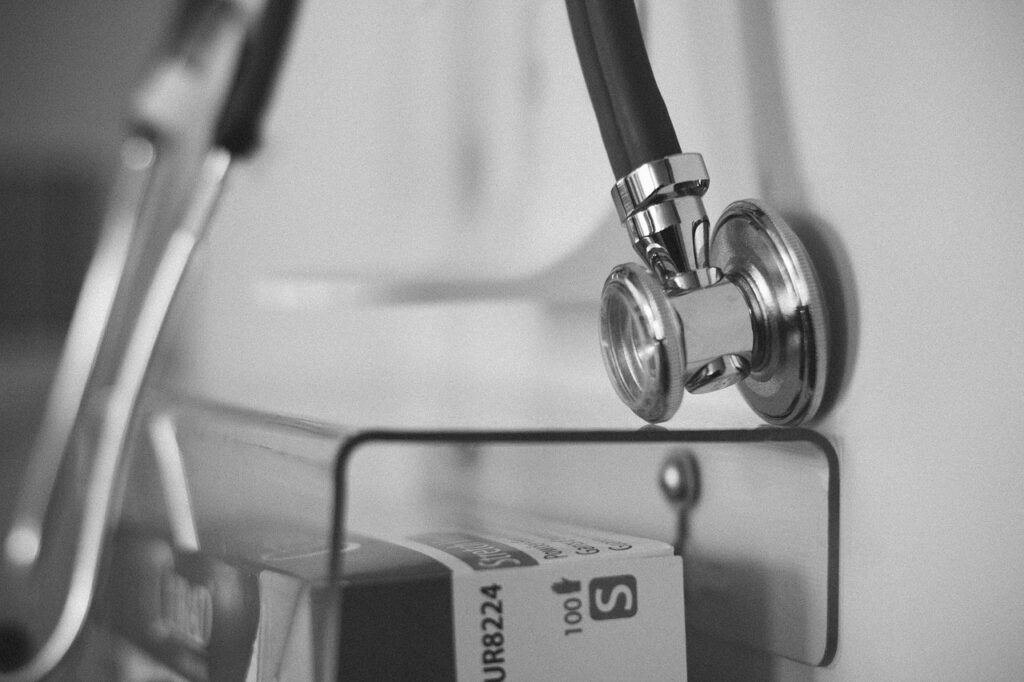How To Better Monitor A Patient’s Well-Being

Monitoring a patient’s well-being is an important part of providing quality medical care. It can help detect any changes in their health status and allow the healthcare provider to take prompt action to improve their condition.
To ensure that you are adequately monitoring a patient’s well-being, there are several things you should do.
In this blog post, we will discuss how to better monitor a patient’s well-being. We will also cover tips and tools to help you do this effectively. So, whether you are a healthcare practitioner or a family member looking after an individual, let’s get started.
1) Use Automated Systems
First and foremost, it is important to use automated systems to track and store patient data. Automated systems allow you to easily observe trends in a patient’s health status over time and spot any issues that may arise.
It also makes it easier for healthcare practitioners to share this information with other members of the care team such as family members or caregivers.
Also, experts at Life Science Automation claim that if you don’t automate tedious tasks the service is slower. So, using automated systems can help streamline the process and improve patient care.
You can use these systems to monitor vital signs, track medical histories, and receive notifications when changes are detected.
2) Schedule Regular Check-Ups
Regular check-ups are necessary to monitor a patient’s overall well-being. These appointments should be scheduled on a regular basis and comprehensive tests should be requested if there is any concern about the patient’s health status.
During these visits, healthcare practitioners can assess their physical condition, mental state, and response to treatments or medications. Additionally, the patient should be asked questions about their lifestyle, diet, and any recent changes that may have occurred.
This way, you will have a complete picture of their health status and can take measures to make sure the patient is staying as healthy as possible.
3) Use Personal Health Technology
Personal health technology has become increasingly popular in recent years due to its ability to track a variety of health metrics. Wearable devices allow patients to monitor their own vital signs such as heart rate, blood pressure, and other indicators.
Additionally, they can use applications to log dietary information or track their physical activity levels. By using personal health technology, both healthcare practitioners and patients can gain a better understanding of the patient’s overall health status.
Furthermore, it can help motivate individuals to take an active role in their own health and well-being. For example, they can set goals and track their progress toward achieving them. Or, they can receive reminders to take medications or attend medical appointments.
4) Communicate With The Patient
Communication with the patient is key for monitoring their well-being. Ask them questions about their symptoms, how they are feeling, and any changes in their condition.
This will help you get an accurate picture of their current health status and any potential problems that may arise in the future.
Listen carefully to the answers and provide support if needed. If something seems off, don’t hesitate to seek help from a medical professional.
Additionally, make sure to involve family members or close friends in the process so that they can provide additional insight and assistance as needed. By monitoring their health closely and keeping an open dialogue with them, you can provide the best possible care for your patient.
It can be difficult to know what questions to ask or how best to communicate with a patient, especially if you are a first-time caregiver. If you need help, don’t hesitate to seek it out from medical professionals and other experienced caregivers.
They can provide valuable advice and resources to help make the process easier for both you and the patient.
5) Use Technology To Connect With Family Members
If family members are not able to physically be present with the patient, technology can play an important role in helping to monitor their well-being. For example, video conferencing tools can be used to connect with family members who are far away.
This will allow them to keep in touch with the patient and stay updated on their health status. Additionally, remote monitoring technology allows healthcare practitioners to provide updates to family members in real-time without having to meet with them face-to-face.
6) Improve Patient Follow-ups
Follow-up plays an important role in the success of any treatment plan. By ensuring that patients are regularly seen and monitored, healthcare providers can more easily identify any issues that may arise and provide timely interventions. Improving patient follow-ups will help to improve overall outcomes.
It is also important for providing ongoing education and support to ensure that individuals maintain their health goals. Additionally, following up with patients can help to create a more positive relationship between the patient and provider which may lead to better health outcomes.
By utilizing technology such as phone or text reminders, automated appointment reminders, and online portals for patient records, providers can reduce missed appointments and increase the efficiency of follow-up visits. This will ensure that patients receive the care they need in a timely manner.
7) Keep Up With New Developments

The healthcare industry is constantly changing and evolving. As a healthcare provider, it is important to keep up with new developments in order to provide the best possible care for your patients. Staying informed on the latest research and technologies can help you stay ahead of any potential issues that may arise.
Additionally, staying up to date on new innovations can help you provide better service and care for your patients.
Overall, staying connected with your patient’s health status is an important part of providing quality care. By utilizing technology, communicating effectively, engaging family members and friends in the process, improving follow-ups, and keeping up with new developments in the industry, you can ensure that your patient’s health is being monitored in the most efficient and effective way possible.
Quality care leads to better outcomes for your patients, so it is important to invest the time and resources needed to consistently monitor their progress.
Hopefully, these tips are helpful for you as a caregiver. Good luck!









